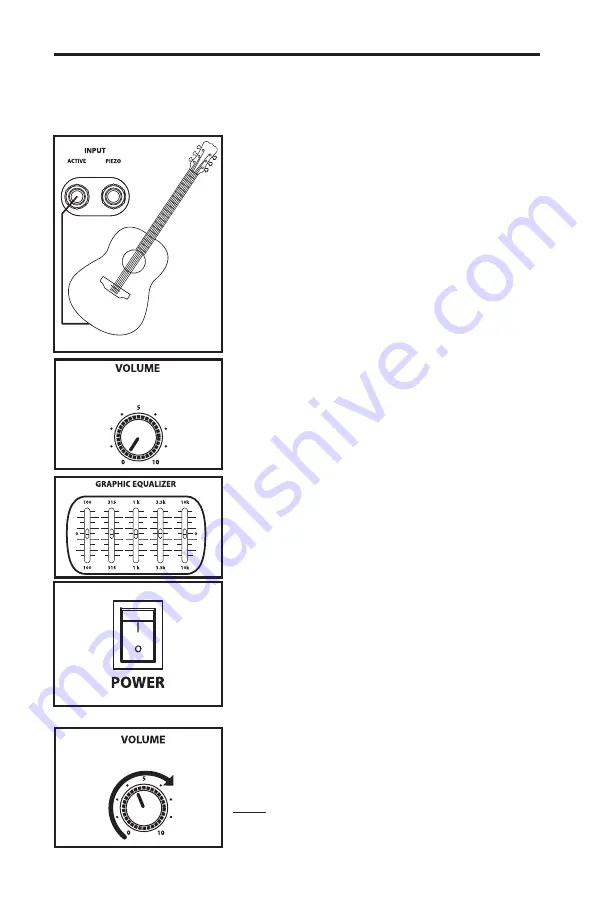
6
Setting Up and Using Your Hartke AC75 and
AC150 Acoustic Amplifier
AC75 and AC150 Basic Operation
Setting up your Hartke AC75 or AC150 Acoustic ampli-
fier is a simple procedure which takes only a few min-
utes:
1. Remove all packing materials (save them in case of
need for future service) and decide where the ampli-
fier is to be physically placed. To avoid potential over-
heating problems, be sure that the rear panel is unob-
structed and that there is good ventilation around the
entire unit.
2. Connect the 3-pin AC plug into any grounded AC
socket. Don’t turn the amplifier on just yet, though.
3. Use standard, shielded music instrument cable to
connect your acoustic guitar, or other electric acoustic
instrument to the appropriate Channel 1 Input jack on
the front panel. If your acoustic instrument's pick-up
system uses a battery connect to the ACTIVE input. If
your acoustic instrument does not have a battery, use
the PIEZO or passive input.
4. Before we turn up the volume, let's set the Acoustic
Ribbon controls to the default setting for getting
good sound quickly. On Channel 1, set the GAIN knob
to “3” (the nine o’clock position) and set BASS and
TREBLE controls to "0" (the twelve o’clock position).
On Channel 2, set the GAIN knob to "0" (fully counter-
clockwise position). Set the main VOLUME control to
“0” (fully counterclockwise).
5. Next, set the Graphic Equalizer sliders to the middle,
0dB position for a flat frequency response.
6. Press the front panel Power switch in order to turn
on the amplifier.
7. Now, let's get some level from the instrument con-
nected to Channel 1. Set the output of your acoustic
to about 3/4’s the way up and then, while playing,
slowly turn the main Volume control up until the
desired level is achieved. If you hear distortion even
at low amplifier main Volume settings, back off the
output of your Acoustic (or check for a faulty cable).
Note:
As a "rule of thumb", always try to keep the main
VOLUME control to a higher setting the Channel GAIN
controls in order to get the cleanest output.









































